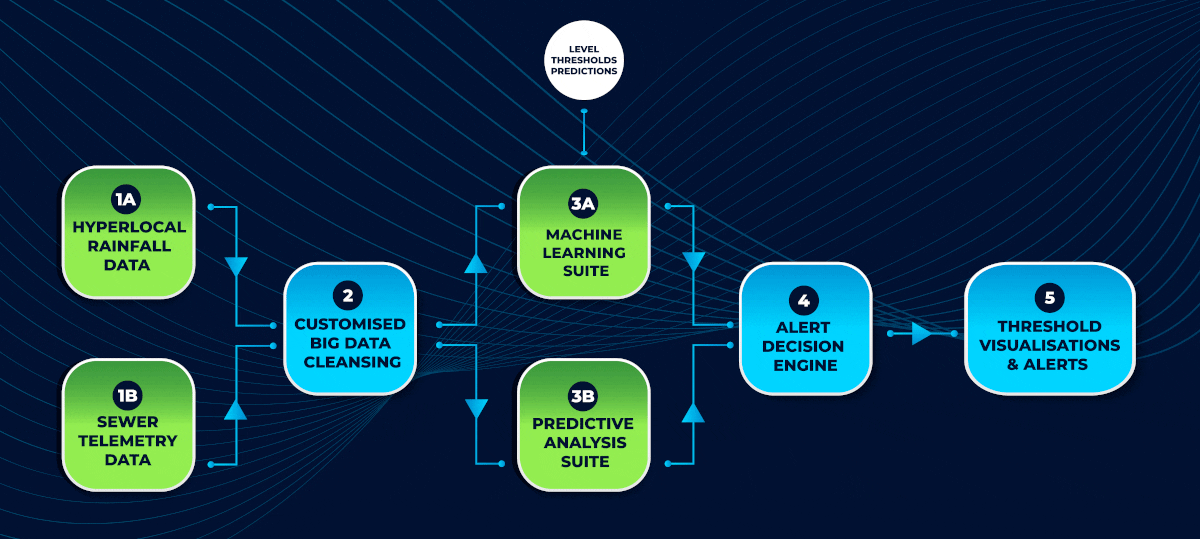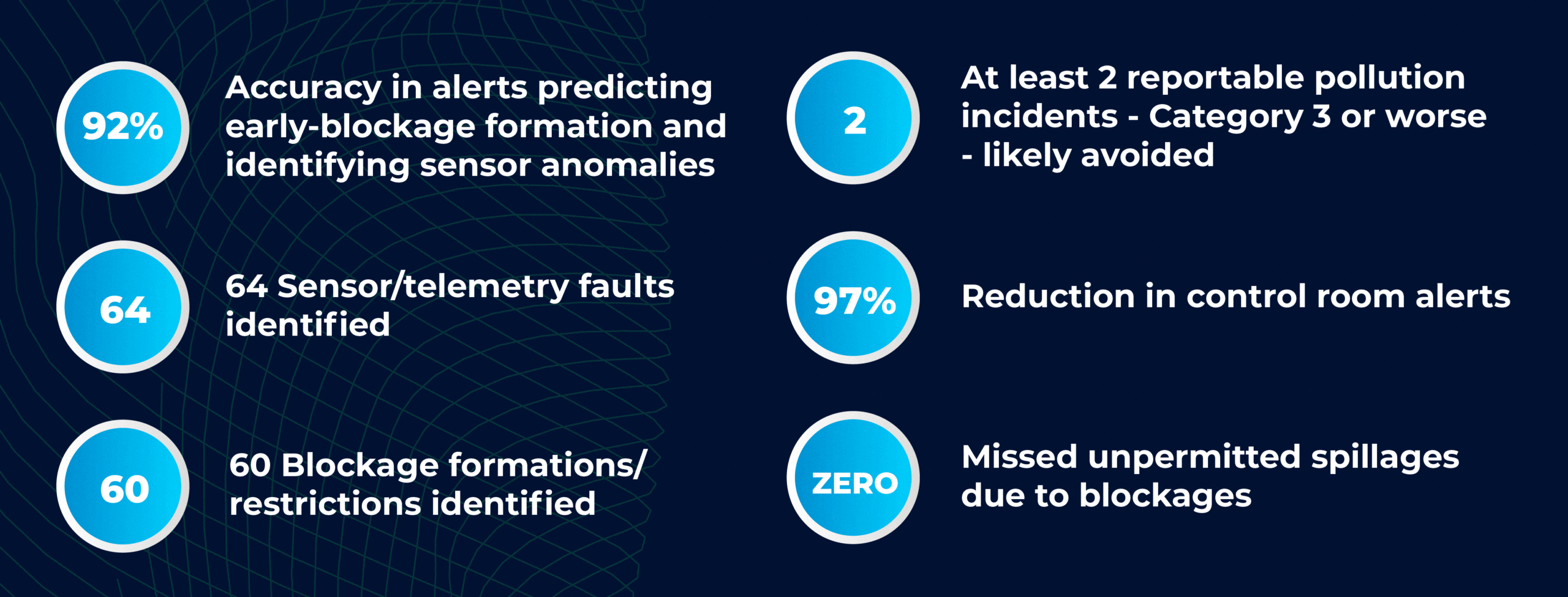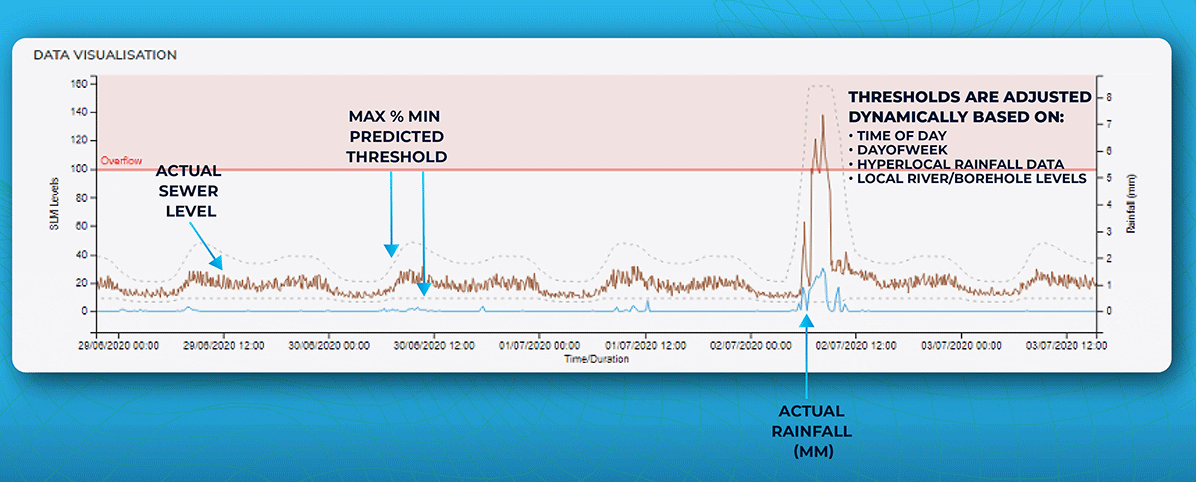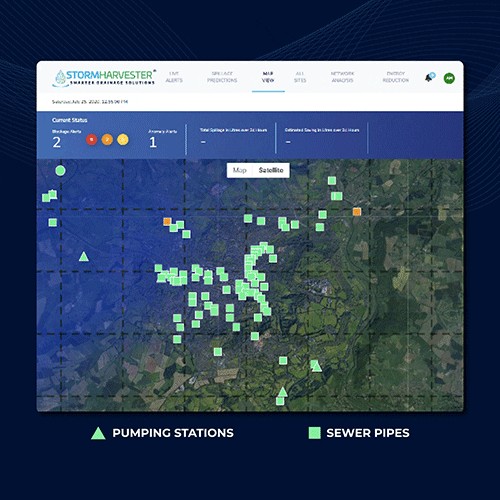
Machine-learning technology trialled on part of Wessex Water’s sewerage network has identified early forming sewer blockages in real-time with a 92% accuracy rate, whilst also enabling an operational shift to condition-based maintenance approach, explains Brian Moloney, managing director of StormHarvester, a firm specialising in the automated monitoring and control of drainage infrastructure.
The potential of artificial technology (AI) to transform sewer network management has been demonstrated during a three-month trial of StormHarvester’s Intelligent Sewer Suite with Wessex Water in the city of Bath. The technology quickly demonstrated its value, with over 60 early blockage formations detected in real-time and control room alerts reduced by a staggering 97 per cent.
Managing sewer blockages represents a significant operational challenge for water and wastewater utilities. As well as problems arising from the blockages themselves, heavy rainfall events often trigger hundreds of alarms simply because of high levels within the sewer network caused by rainfall runoff. The volume of these alarms during wet weather periods can be overwhelming for operational and maintenance teams.
The incumbent rules-based alarm system operating in the Wessex Water control room generated some 4,500 alarms during the trial period, yet StormHarvester’s Intelligent Sewer Suite of AI tools was able to mute alarms where the high sewer levels were predicted by the AI software due to rainfall, reducing the total to 138, of which 124 were genuine blockage formations or sensor faults. This gave the utility’s operational and maintenance crews capacity to respond rapidly to each alarm, even during periods of heavy rainfall.
The initiative started in Spring 2020 when Wessex Water invited 16 technology companies from around the world to demonstrate the value of applying artificial intelligence to the wastewater network. As a finalist, Belfast-based StormHarvester was invited to run a three-month trial to carry out proof of concept.
The trial took place from June to August 2020 in the wastewater catchment of the historic city of Bath, Somerset, which comprises 3,500km of sewerage, representing 10% of Wessex’s total. Intelligent Sewer Suite was applied to an array of 98 level sensors already present in the network – 89 at combined sewer overflow (CSO) sites and the remainder at pumping lift stations.

Machine learning
Intelligent Sewer Suite uses machine-learning, an AI application that enables systems to automatically learn and improve from experience without being explicitly programmed to do so. The StormHarvester system’s smart machine-learning algorithms and predictive analysis tools were applied to catchment sensor data and corresponding hyperlocal rain forecasts to predict the wastewater flow levels and detect potential early blockage formations in real-time.
Wessex Water wanted to test the ability of machine-learning to:
• Predict blockage formations in sewer pipes and pumping stations early and intervene before they became service failures
• Better separate genuine control room alarms from alarms triggered because of high volume rainfall during wet weather
• Dramatically improve the response time to service failures
Blockages can lead to costly service failures including pollution or flooding events, but if spotted early enough, they can be quickly remedied. Wet weather makes it difficult to differentiate expected high sewer levels caused by heavy rainfall volumes from those arising from restrictions such as partial or total blockages.
By deploying AI with the capacity to differentiate between these different events, both an improvement in alarm quality and alarm rationalisation is made possible.
Easy set-up
Intelligent Sewer Suite took only three weeks to set-up before it started providing usable results and did not require any hydraulic models.
The process included the extraction of historic sewer-level data and rainfall levels within a 1.5km2 grid for each of the 98 monitored assets. Tens of millions of iterative machine-learning calculations were then undertaken in order to ‘learn’ sewer asset behaviour in both dry and wet weather periods.

Accurate threshold forecasting
Safe operating windows for assets in the network were predicated based on a number of factors including time-of-day, day-of-week, hyperlocal rainfall and local river levels. These dynamic thresholds are predicted for six hours into the future and are updated every 15 minutes, at asset level, which is one of the keys to such accurate forecasting.
The real-time predictions and blockage alerts are used to identify potential non-compliant, out-of-sewer pollution events before they occur. Maintenance crews can be proactively directed to these locations to remedy issues before they arise or worsen, mitigating service failures.
Edmund Willatts, asset reliability engineer, Wessex Water said, “The StormHarvester system used machine-learning to set safe operating windows or thresholds for each asset. Each time these had a significant breach, we received alerts, which in turn were passed to the operations team so that they could respond.”

Pollution reduction
The Environment Agency is seeking a zero level of pollution incidents for the water industry in England and puts incidents into four categories, with Category 4 being the least serious and having no impact on company performance. Category 3 incidents can impact on performance commitments and risk breaches of environmental protection and water industry legislation. They can also lead to significant costs, including emergency response charges and penalties from regulators.
Results from the three-month trial showed significant alarm rationalisation and a high degree of accuracy in blockage detection. Over 60 early blockage formations were detected in real-time, at least two of which were likely to have caused pollution incidents – Environment Agency Category 3 or worse. Over 60 telemetry and sensor faults were also detected.

Jody Knight, asset technology manager at Wessex Water said, “The StormHarvester team identified sewer blockages that using our normal working processes we may not have spotted until they had resulted in unwanted sewer overflow events.”
Deployment of StormHarvester’s AI approach was shown to be 92% accurate, with no blockages missed. Additionally, a 97% reduction in control alarms was achieved with only 138 in total – little more than one-a-day over the period.
Wessex Water considered the alerts provided by StormHarvester to be a major improvement on the status quo, where operational staff were regularly overwhelmed by the large number of high-level and overflow alarms occurring during periods of heavy rainfall. It also makes the potential for predictive maintenance very realistic in the near future.
Willatts said, “This condition-based sewer maintenance versus the scheduled cleaning regime will be key to making operational teams more productive and efficient going forward.”

Itemising capabilities
The Wessex pilot revealed that StormHarvester technology has the capability for:
• High blockage prediction accuracy – 92% of alerts were relevant and required and not a single blockage resulting in a pollution incident was missed
• Few false positives – 8% of alerts were false positives
• Long-range blockage prediction – early blockage formations identified up to eight weeks before they would have resulted in service failures
• Condition-based maintenance – the three-month trial has enabled a shift in approach.
• Control room alarm rationalisation – a 97% reduction in control room alerts was achieved versus business as usual
Knight said, “One of the biggest problems we have serving our customers is not knowing where and when blockages will occur, or are likely to occur, in the wastewater network. During the three-month trial, StormHarvester identified at least two incidents that we are fairly confident would have resulted in Category 3 spillages, or worse, if it was not for the early blockage detection alerts received and the subsequent action taken by Wessex operational staff.”
Neil Macdonald, co-founder of StormHarvester said, “The results have been excellent. Wessex Water have been great to work with and this trial has proven that Intelligent Sewer Suite is effective at scale.
“This is further endorsement of our five-year journey and multimillion pound investment to build an effective AI solution combining machine-learning, predictive analytics and hyperlocal rainfall forecasting leading to intelligent sewers that serve customers, communities and the environment.”

Predictive maintenance
He added, “Our technology proves that predictive maintenance is possible, with early blockage detection occurring from hours to weeks in advance. This represents a significant increase in the available time for operational crews to recover and repair assets.
“StormHarvester sees this as a real game-changer, with a clear route to achieving efficiencies for wastewater utilities, reducing wastewater pollution and both internal and curtilage flooding.”
Based on the value brought by the StormHarvester alerts during the proof-of-concept trial, Wessex Water has maintained the solution running on the Bath wastewater catchment into 2021.
Brian Moloney, managing director, StormHarvester, is hosting two roundtables at the SWAN 11th Annual Conference: Redefining Smart Water, where he will speak about the use of AI to detect early forming blockages in Wessex Water’s network. The virtual event takes place from 24-28 May. To register visit www.swan-2021.com #SWAN2021






